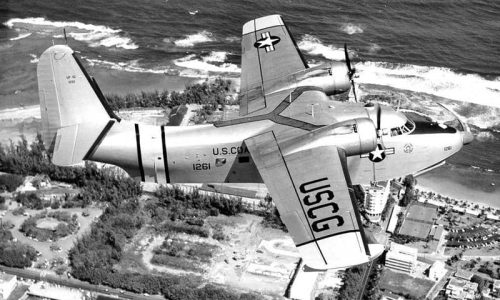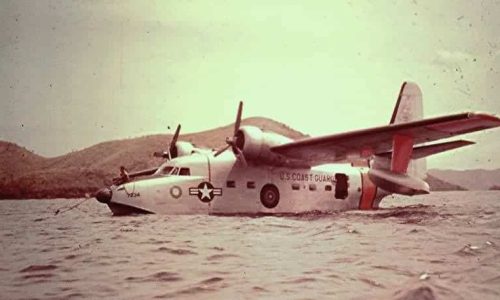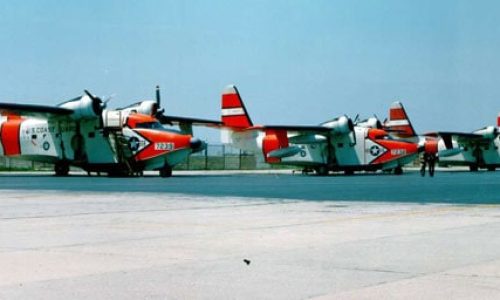The Albatross, known by those who flew it as the “Goat”, proved to be ideal for the Coast Guard. It could operate from both land and water. For take-offs in open sea or short field operations it could be fitted with JATO affixed to each side of the aft fuselage. The external store racks fitted to each wing were used to carry 295 gallon drop tanks. When combined with the fuel capacity of the main tanks and fuel carried in the wing floats a range of over 2100 nautical miles and 14 plus hours in the air, with sufficient fuel reserve, was obtained, making it an excellent search vehicle. AN/APS-31A search radar was fitted in the nose. HF SSB receivers, interrogators, and MF/VHF/UHF direction finding equipment was standard. Sheltered water take-offs and landings at weights up to 32,000 pounds were possible without the use of JATO. Open sea operations were possible under favorable conditions with JATO. With lives at stake, however, there were numerous times when “possible” was substantially re-defined.
The aircraft were very mission adaptable and were located at air stations throughout the Continental United States as well as Alaska, Bermuda, Puerto Rico, Hawaii, Guam, and the Philippines. In addition to search and rescue the UF/HU-16 flew fishery patrols, pollution surveillance patrols, aids to navigation missions, logistic supply missions, law enforcement duties. A main cabin designed to carry ten passengers was equipped with a series of cargo tie down points which enabled the UF to be used to supply isolated duty stations throughout the Coast Guard. Up to 5000 pounds of cargo could be carried. Servicing at these locations was limited and the aircraft fuel system was such that gasoline could be put into the float tanks from 55 gallon drums and then transferred to the main tanks.
The last Coast Guard Albatross, number 7250, made its final landing on 10 March 1983, at Coast Guard Air Station Cape Cod. The last true amphibious seaplane flown by the Coast Guard was then retired from service.














